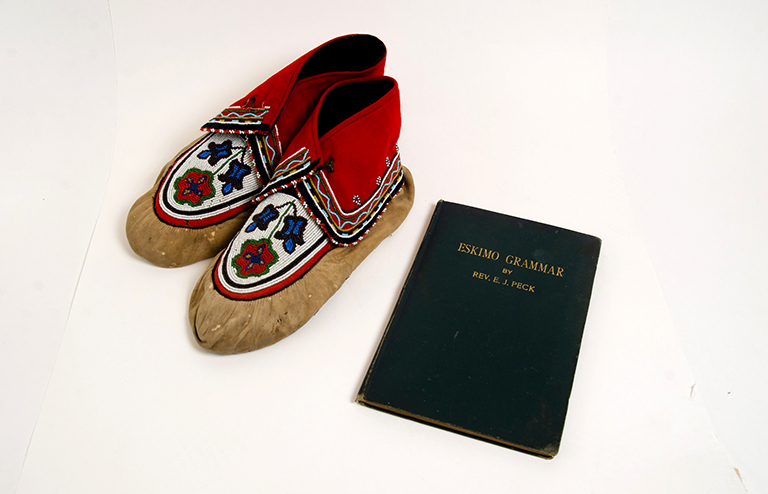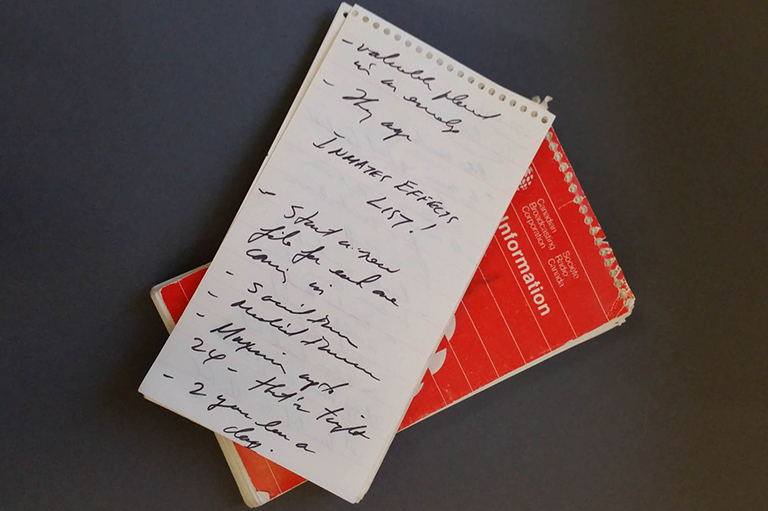Moccasins and Book

Both of the items seen here were used by Philip de Carteret when he worked as a trapper and fur trader for Revillon Frères and the Hudson’s Bay Company between 1929 and 1934 in the Nunavik region of northern Quebec. At the age of twenty-one, de Carteret signed a five-year contract with French fur and luxury goods company Revillon Frères and moved from England to Canada, where he worked mostly out of Fort Chimo (now Kuujjuaq) at the mouth of the Koksoak River on Ungava Bay. An HBC outpost had been established there in 1830.
The moccasins were handmade by an unknown Indigenous woman in the late 1920s or early 1930s before they were acquired by de Carteret. Inside the cover of the ninety-two-page book Eskimo Grammar, written by Anglican missionary Reverend Edmund Peck and first published in 1919, de Carteret inscribed “P. de Carteret/ Ungava Port./ Koksoak River.” Peck had studied Inuktitut during a three-month voyage from England to Moose Factory on Hudson Bay and became proficient in both Inuktitut and Cree, believing that it would benefit his work as an evangelist. Known by some as Uqammaq, “he who speaks well,” Peck went on to publish several religious texts in Inuktitut.
After his term as a trapper, de Carteret settled in Jersey, one of the Channel Islands, and raised a family. An accomplished sailor, navigator, and fisherman, de Carteret was also an accordion player and a storyteller who published several articles about his adventures in The Beaver magazine (now Canada’s History).
Themes associated with this article
Advertisement




